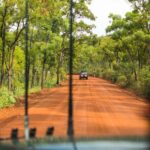An exciting escapade that is truly a once in a lifetime for many, there is no better way to experience the true side of Australia than by 4WD.
With great adventure comes great responsibility. Heading out to a remote area by 4WD is no easy feat and shouldn’t be taken on so lightly.
Here are some invaluable tips on how to prepare for your first 4WD remote trip in Australia.
1. Be the captain of your time
The first and foremost step to preparing for a 4WD adventure is to understand the realities of time. Determine which destinations are practical based on the amount of time you have for your adventure, and ensure that the estimates made for getting there are not overdone. Avoid planning long drives, because tiredness, stress, and anxiety isn’t worth the trouble of an unachievable schedule. Cut your daily drive by half to maximise the time spent enjoying a destination, relaxing, recouping and exploring it.
2. Choosing where to go
There are many epic Australian 4WD adventures that make the bucket list, such as the drive from Weipa to Cape York – where a stop by the Albatross Bay Resort to rest and regenerate is a must.
When choosing remote areas, you will want to consider adding additional fuel storage to your vehicle, along with season specific camping gear, clothing, and other necessities.
Once a destination is set, it’s time to pull out your maps and start planning your 4WD route to getting there.
3. Picking a route
With Google Earth, GPS, and many other maps available in today’s day and age, many 4WD travellers will often overlook old school paper maps. But if you ask any frequent 4WD explorer, paper maps are the way to go, given their varying scales that offer large impressions of the coverage area of travel. Hemp Maps’ is a good one to go with, and are accurate with the benefit of being filled with local information such as highlights, road conditions, warnings, and fuel stops.
Don’t forget to bring your paper map when on the road. Many remote areas have poor signal, making most GPS and smartphone mappings redundant when on the road. Always make sure you have a solid line of communication at all times – a UHF radio is good, but a satellite phone is much better.
4. Learn as much as you can
Arm yourself with knowledge of the area, but remember to be humble about it as arrogance can find trouble. Keep a good Australian survival handbook in your glovebox for when you need some specific advice.
5. Practice your 4WD skills
Practice makes perfect, and 4WD is no different. Get behind the wheel and explore nearby areas with different terrains to help improve your driving skills. Alternatively, you could always engage a trainer to help you improve your 4WD skills.
6. Get yourself a PLB
Getting lost in remote Australia is not a situation you ever want to experience, which is why a personal locating beacon is essential to ensure this never happens. Buy it, carry it, and get it registered to ensure your safety when travelling.
7. Get your vehicle adventure ready
Setting off on a 4WD adventure is exciting. What was once a daily mode of transport suddenly becomes a safety vehicle.
Before heading off, get your vehicle thoroughly checked by an experienced 4WD mechanic – preferably one that is familiar with touring rigs. Mention where you’re going so that the mechanic is aware of the journey that lies ahead. The mechanic should check over all the essential mechanics and advise on the spare parts you may need to bring on your journey. Beyond a mechanical check, you will need to check the electrical components of your vehicle too. Adventuring to remote areas may require a dual battery set up to ensure reliable power at all times.
Be sure that they check that your spare tyre is in good condition and is ready to step up to the playing field should the need ever arise.
On the road, continue to check your vehicle daily, such as your fan belt tightness, radiator levels, brake and engine fluids, battery levels, and so on.
8. Pack smart
How much space you have in the cargo will determine what you will be able to bring for your trip. A roof rack and a cargo barrier will maximise storage potential, but you will need to check the roof loading capacity of your vehicle.
You could also fit in a cargo drawer setup for bigger 4WD trips, to store your food and all other necessary gear out of the way. Add some jerry can holders for added fuel capacity.
Do your research on the weather conditions of your destination. For example, Outback Queensland can get pretty cold at night even during the height of summer.
9. Preparing food and power
Foldable gas multi burner stoves are easy to transport and take minimal space, making them a great solution to your cooking needs. You can easily secure gas bottles to your roof rack, and kitchen gear can be stored in the cargo drawers.
Travelling remote will mean that you need to have a fridge/freezer. A family of four could pull off using a 50 litre fridge for a week of travel. Having a fridge requires a reliable power source, which is why a dual battery set up (with solar panel for recharging) is a great idea for a 4WD adventure.
10. Preparing accommodation
Camping accommodation can be as simple as a tent, an air mat, and a sleeping bag. Four to six people tents tend to pack up compactly and can be stored on the roof rack. Don’t forget to set up camp lighting with high tech LEDs that use low power and last longer.
Remember, camping isn’t always about camp sites. It’s good to spoil yourself once in a while, so if you’re ever in Weipa, head to the Albatross Bay Resort for a comfortable stay to help you re-energise for your 4WD journey ahead.
Banner image credit: Tropical North Queensland




